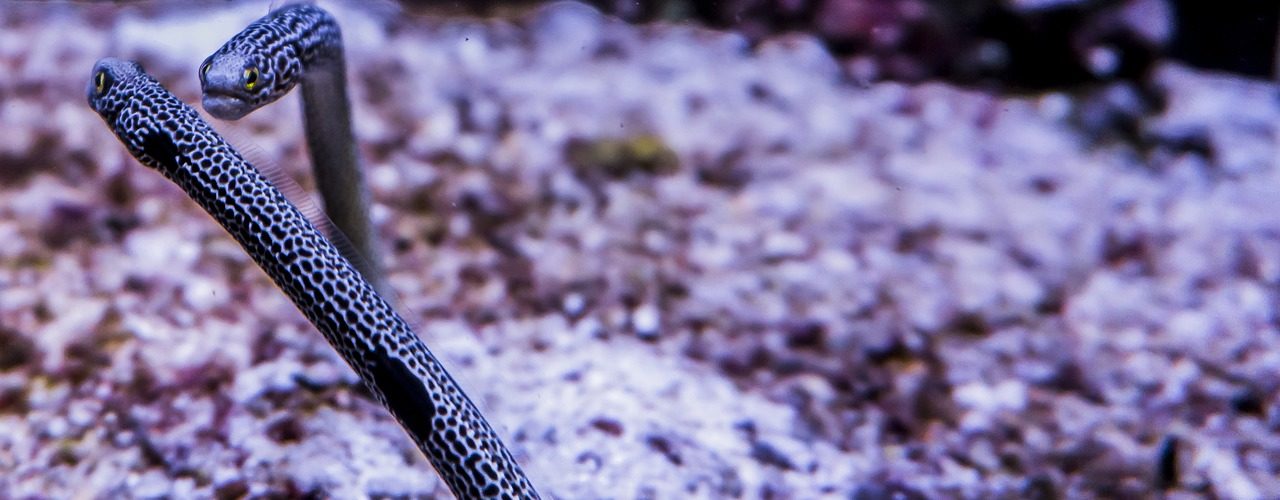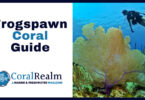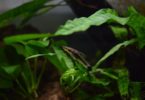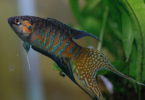Last Updated on February 10, 2023 by Matt
The Spotted Garden Eel, Heteroconger hassi, gets its name from the fact that from a distance it looks like a waving blade of grass, and the distinctive spotted body. However these fish are far from what you will find in your garden!
A group of Garden Eels is spectacular to see, looking like a bed of seagrass, swaying in the current. They are similarly mesmerizing in the home aquarium; a real talking point which will be guaranteed to be a talking point.
In this Spotted Garden Eel care guide we will run through general information about these amazing fish, such as a description, habitat, diet, before giving tank compatibility and tank mates.
IN THIS ARTICLE
Quick Spotted Garden Eel Care Sheet
| Spotted Garden Eel Summary | |
| Care Level | Expert |
| Family | Congridae |
| Temperament | Peaceful |
| Diet | Carnivorous |
| Origin | Indo-Pacific |
| Minimum Tank Size | 40 Gallons |
| Color | Black, Blue, Yellow |
| Size | 16 inches (41 cm) |
| Reef Compatible? | With Care |
| Temperature | 72-78°F (22-25.5°C) |
| Carbonate Hardness | 8-12 dKH |
| Specific Gravity | 1.020-1.025 |
| pH Range | 8.1-8.4 |
Description and Distribution
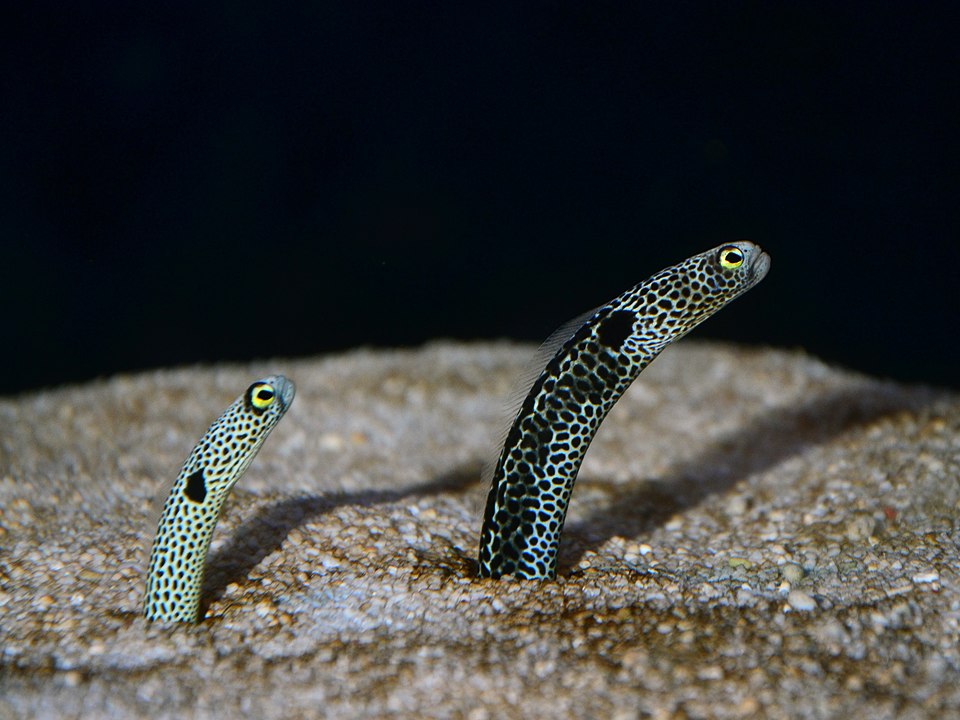
Credit: Johan Fredriksson, CC BY-SA 3.0, WikiCommons
Garden Eels are part of the Congridae family, along with Conger Eels. There are three subfamilies with the Congridae family; the Bathymyrinae, the Congrinae, and the Heterocongrinae. The Garden Eels are part of the Heterocongrinae subfamily, which has 27 species in two genera.
Easily the most popular Garden Eel species for the aquarium is the Spotted Garden Eel.
Kingdom: Animalia
Phylum: Chordata
Class: Actinopterygii
Order: Anguilliformes
Family: Congridae
Genus: Heteroconger
Species: hassi
This species reaches a maximum of 16 inches in length, with a body diameter of 0.5 inches. The head is the same diameter as the body, with very large eyes and mouth located at the tip of the head.
The body has a white coloration, covered with many small black spots. There are three larger distinctive black spots on the body; one by the pectoral fin base at the gill opening, one central on the body, and the final one by the anus. Juvenile Spotted Garden Eels are very thin with a fully black body.
The Spotted Garden Eel displays sexual dimorphism; the males are larger than the females and have a larger and more protruding jaw.
Widespread throughout the Indo-Pacific region, the Spotted Garden Eel is found from the Red Sea and the Eastern African coastline, to the Polynesian Islands, and as far north as Japan. They colonize sandy flats and slopes that border coral reefs, and often are found in areas with dense seagrass growth. When in areas of seagrass Garden Eels can blend in almost seamlessly. Often the Spotted Garden Eel is found at depths of 23-150 feet (7-45 metres).
Garden Eel Behavior and Diet

Spotted Garden Eels can swim freely, but once they have dug a burrow it is extremely unusual that they leave it. They actually secrete a sticky paste-like substance which helps to anchor themselves into the hole. The burrow a Spotted Garden Eel lives in is large enough for the eel to completely retreat into. Garden Eels are very shy, and dart back into their burrows at any sign of trouble. This is why it is difficult to get a clear view of Garden Eels in their natural habitat. In aquariums however they can quickly get used to their surroundings and will stay visible peeking out of their burrows so you can get a good look.
When it is time to breed, during the mating season, Garden Eels will move their burrows closer together so they are near potential mates. Males and females will extend their bodies from their burrows and entwine themselves together for mating.
The Spotted Garden Eel is a pelagic spawner; the fertilized eggs are released into the water column. The eggs will float in the open water for a time before hatching. The larvae will feed as planktonic animals until they are large enough to swim back to a sandy reef flat and make their burrow.
Spotted Garden Eels feed upon small planktonic organisms which drift and float past their burrows with the current. They usually face the direction of the current to await passing prey items.
In the aquarium they should be fed a variety of fresh and frozen meaty foods such as brine shrimp, mysis shrimp, chopped crab and fish, krill, silversides, and other chopped seafood. It is important they are also fed a supply of live foods such as brine shrimp, mysis shrimp, small feeder fish and ghost shrimp.
Compatibility and Tank Mates
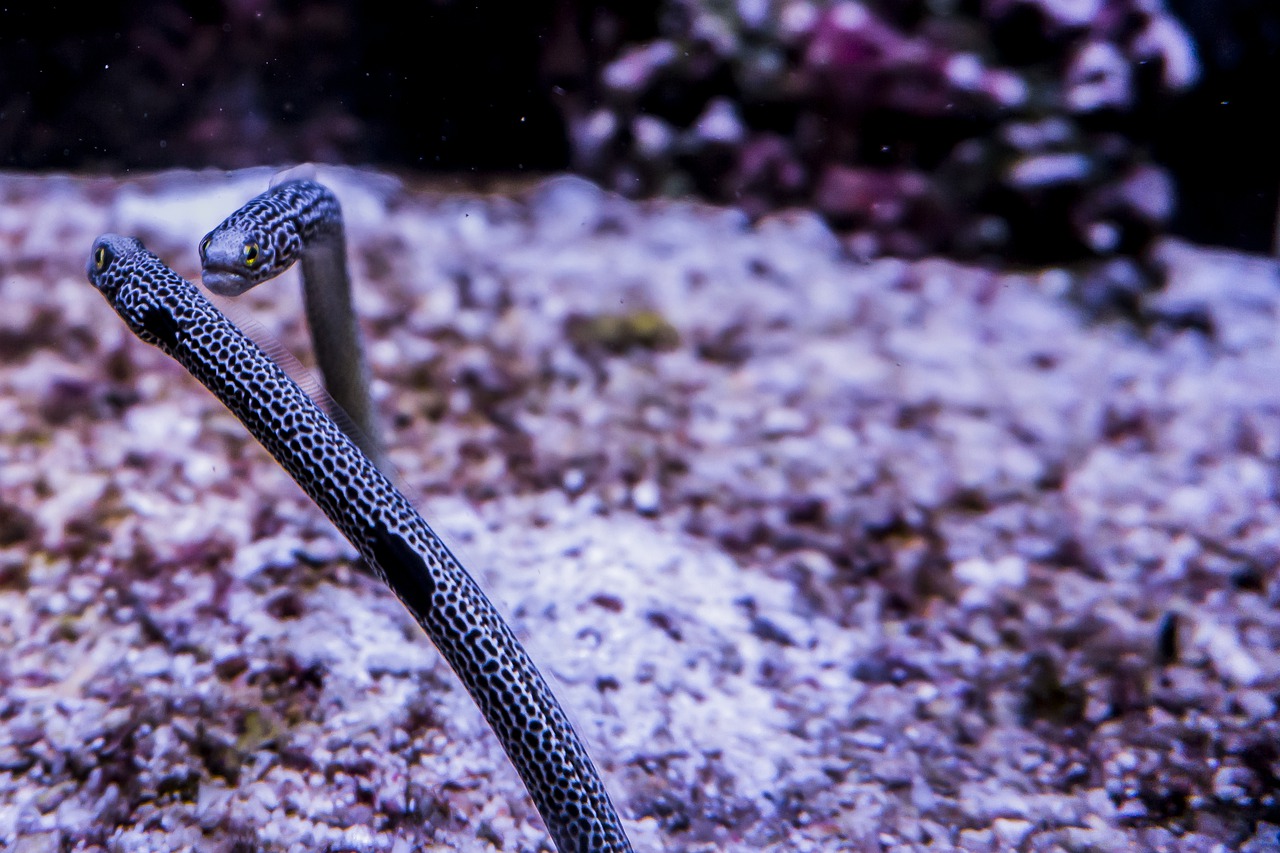
Spotted Garden Eels need a fish tank of at least 40 gallons with a fine sandy substrate that they can burrow into. They need the substrate to be at least 6 inches deep. A substrate such as AquaNatural Reef Sand is perfect. This is crucial, as they need to be able to create effective burrows. If they are unable to do so they will become very stressed. 6 inches is an absolute minimum, a better substrate depth would be 8-12 inches.
Having 12 inches of substrate can eat into the space of a tank greatly, therefore having as deep a tank as possible will aid in keeping plenty of water space. For instance a 30 inch tall tank with 10 inches of substrate still has 20 inches of water space to play with. A tank with a good depth (front to back measurement) will allow you to create a slope, with a deep substrate towards the back and a more aesthetically pleasing shallower substrate at the front.
As Spotted Garden Eels use the currents of their sandy native habitats to bring them food, they require a moderate level of current and water circulation in the tank. If your aquarium filter return doesn’t generate enough current then an aquarium wavemaker will be a good investment.
Spotted Garden Eels are sociable creatures, being found in colonies of hundreds in the wild. As such a single Spotted Garden Eel will feel fairly lonely in a tank by itself. As such, to appease their colonial nature they should be kept in a group of at least 3. A tank setup with 6-10 individuals is perfect.
They can be kept in a large coral reef tank setup if they have a large open sandy area for them to dig their burrows and colonize. A space of a square foot of sand per Spotted Garden Eel pair is what you are looking for. They are also perfect for a FOWLR setup (fish only with live rock). All they need is plenty of sandy substrate and open space and they will be happy!
To achieve this you should refrain from putting decoration in the tank; keep the sand free so that the eels have as much space as possible.
If you are wanting to have Spotted Garden Eels with live rock and corals, then you will most likely need a large 120 gallon or larger tank.
Spotted Garden Eels are docile creatures, and won’t attack fish they share the tank with. However they may eat very small fish and fry, as well as invertebrates. So they are reef safe and compatible, but with great care, as they will happily eat shrimp and crabs.
As they are naturally very shy, aggressive tank mates should be avoided. Calm and gentle tank mates will allow the Spotted Garden Eels in the tank to be left in peace. This will allow them to emerge freely and feed at will.
Spotted Garden Eels should be kept in a tank in which the temperature range is maintained at 72-78°F, carbonate hardness is kept at 8-12 dKH, the specific gravity is between 1.020-1.025, and the pH range is from 8.1-8.4. An appropriate aquarium filter and protein skimmer are necessary to maintain water quality, as are regular water changes.
Conclusion
Hopefully this Spotted Garden Eel care guide has been informative and useful. Spotted Garden Eels are the most common of the Garden Eels to be kept in aquariums; they are incredibly pretty fish, covered in black spots.
While not the easiest to care for, it is very worth the extra effort, as these fish make it look as though you have a waving seagrass meadow in the bed in the fish tank.
Let us know how you fare with these amazing fish in your home aquarium in the comments!

